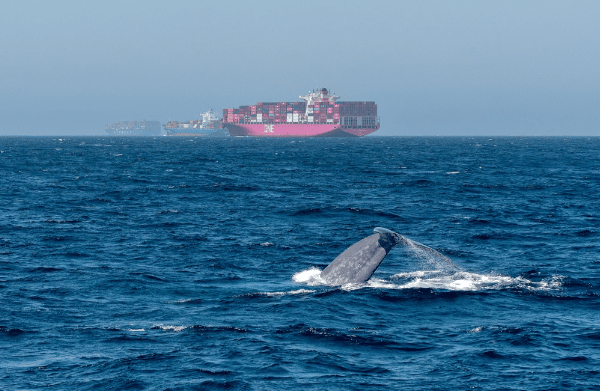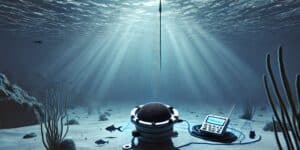Often used by environmental regulators, the term SEL (Sound Exposure Level) commonly refers to the potential effects of sounds made by humans and machines on marine creatures. The whole sea transportation industry actors need to improve their business sustainability while complying with international regulations. A better understanding of SEL provides baseline information about the environment’s condition and allows those stakeholders to take appropriate decisions to lower the noise and the threat to the marine ecosystem.
Why do shipping professionals have to monitor Sound Exposure Level?
Shipping professionals and all the stakeholders in the marine industry generate several types of noises in their daily operations. Increasing shipping activity creates heavier noise pressures on all levels, especially on the already complex marine ecosystem. As part of the fight against pollution in all its forms, including noise pollution, the ocean freight industry has to monitor and decrease its impacts on the environment. Coupled with SPL (Sound Pressure Level), SEL (Sound Exposure Level) is a key indicator used to improve acoustical emissions assessment.
Your environmental monitoring at your fingertips!
Optimize your environmental monitoring, become smarter and more sustainable with a unified system that gathers all your environmental sensors & data in one place.
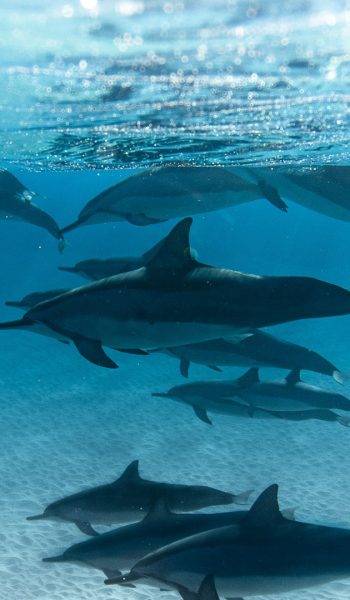
What is Sound Exposure Level?
Sound exposure level (SEL) is a measure of energy. It takes into consideration both the received sound level and the extent of the exposure. Because it permits the comparison of sound exposures of different stages in terms of total acoustic energy. Simply said, it is a cumulative measure of the acoustic energy of a given sound over the duration of the noise event.
From a numerical point of view, Sound Exposure Level (SEL) is the equivalent of the total sound energy over the stated period. The unit of sound exposure (SI) is the Pa²· s (pascal-squared second). The higher the noise, the higher the decibels, and the longer the exposure, the higher the SEL. As an example, if an alarm delivers a noise level of 90 dB during 1 second, then the SEL would be 90 dB. If, however, the event lasts only 1 second more, the SEL would increase up to 93 dB.
What types of noise does the shipping activity generate?
Human activity noise induced is called anthropogenic noises. They vary in terms of intensities and frequencies. In general, it can be divided into two categories: low-frequency stationary noise and high-intensity impulsive noise.
As far as sailing activities are considered, from microphones to any sound made by the vessels’ components during their journey, diverse frequencies are heard on different octave bands. The high-intensity type can be produced by the following:
- Propellers and turbines rotations generated bubbles, which formation and breaking cause loud acoustic sound (cavitation);
- Motors, engines like crankshafts or turbines noises, coil whine, or electromagnetic acoustic noise resulting from resonances from the interactions of magnetic forces and their structural modes;
- Vessels’ bodies hitting sea waves;
- Active sonar application used by merchant ships or navies and fishing vessels;
- Dredging activities;
- Pile driving on near-shore related construction: bridges, ports, drilling, platforms, wind farms, etc.
About low-frequency stationary noise in the shipping industry, it may be engendered by noise caused by all vessel types on the high seas:
- Oceangoing freighters with their associated heavy cargo;
- Fishing ships;
- Recreational boats with propeller-driven features like yachts, cruise ships, or mega-yachts;
- Tugs, barges…
What are the impacts of underwater noise on the marine ecosystem?
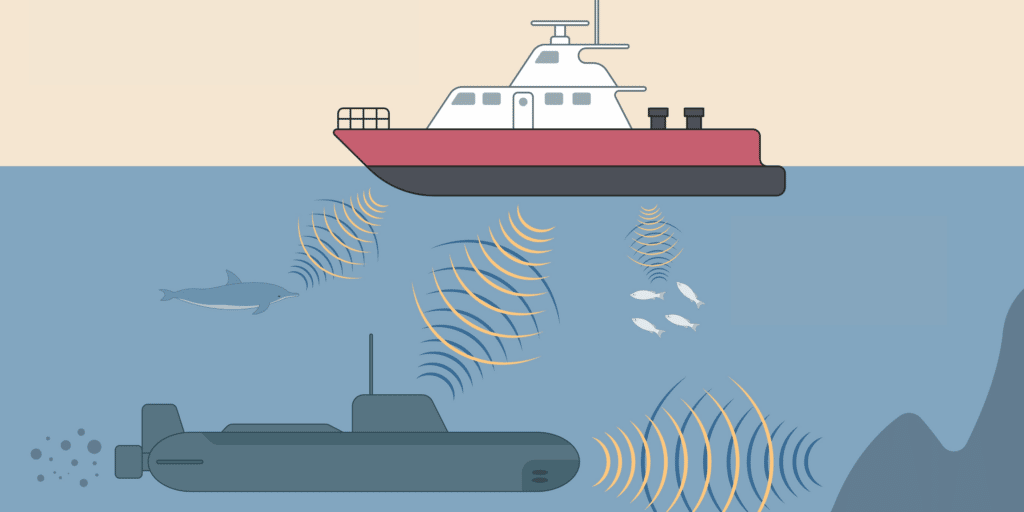
Over the years, the overall ambient noise level has significantly increased due to higher marine traffic, along with various offshore and shore activities, as well as coastal developments. Due to continuous exposure to underwater sounds, marine organisms like mammals or cephalopods may suffer long-term health effects. The nature and severity of the adverse effects induced by exposure to noise depend on the sound frequency and intensity (decibel level) and, of course, the duration of exposure (one-off or chronic).
It has been observed that high-intensity types of noises cause:
- Physical injuries and stress: sonar activities interfere with the sound-based orientation of mammals and they lose direction senses. This hinders basic behavioral tasks like food hunting, deep sea orientation, and communication.
- Temporary or permanent loss of hearing sensitivity;
- Impact on reproductive context: sonar activities affect animal communication which in the long term impacts the population distribution and species abundance.
For future generations, it is most likely that the current changes will heavily impact food source structure and the fishing industry.
What are the harmful effects of noise from marine activities on people?
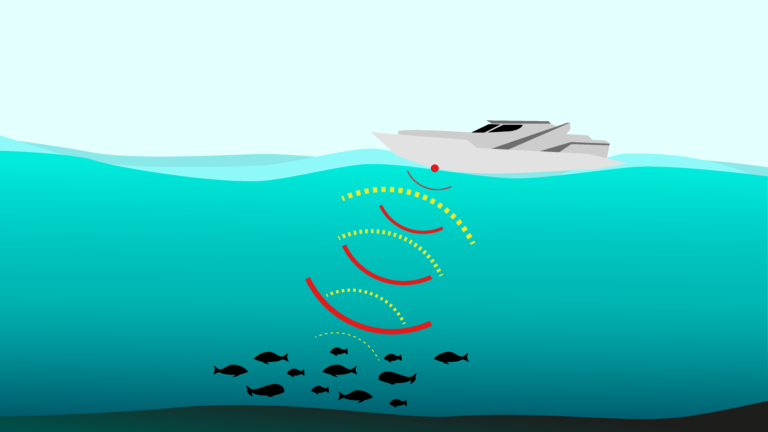
Furthermore, though the key concerns are mostly studied at the animal reigns level, long-time exposure to the same types of noises impacts humans as well.
While the ships are sailing, acoustic disturbances are created on the surface. The surrounding environment like the air, the ambient humidity, and the types of materials found in the ships could hasten the SEL as sound traveling depends on the constituents of its course. Crews and passengers on board could therefore suffer from hearing impairment.
The same applies to inhabitants of dense ships traffic on coastal sides. Yet, according to the Center for Disease Control (CDC), people’s exposure to potentially damaging noise levels in their daily life is widespread. Noise-induced hearing loss may appear after a one-time exposure to sounds with an intensity over 120 dB or chronic exposure to sounds with an intensity of 85 dB and above. The louder the sound, the shorter the time of exposure required for health damage. Chronic exposure might lead to hearing loss, increased levels of stress, sleep disturbance, hypertension, and modification of social behavior.
Therefore, to protect people’s health from exposure to excess noise (residential, occupational, and environmental), which is considered a public health hazard, international organizations have introduced some limitations pertaining to noise levels into the legislation:
- The International Electrotechnical Commission (IEC), a Switzerland-based organization, sets SEL standards for all electrical, electronic, and related technologies, to mention only smartphone sound measurement.
- In workplaces, the National Institute for Occupational Safety and Health (NIOSH) in the USA sets the highest permissible level of repeated noise exposure (Recommended Exposure Limit – REL) at 85 dB over an 8-hour day (time-weighted average – TWA). The CDC used the NIOSH recommendations to define its own recommended maximum environmental noise exposure levels.
- On another hand, the Occupational Safety and Health Administration (OSHA), has defined federal, state, and local levels of daily permissible occupational noise exposure applicable in the United States depending on the duration per day. The peak sound pressure is set at 115 dB for less than 15 minutes, and 90 dB for an 8-hour duration.
How do shipping professionals monitor SEL?
Marine commercial activities generate persistent and dynamic noises due to the constant movements of the ships. Thus, to have a consistent measurement of noise exposure, dynamic sound control is mandatory.
The sea shipping players use a worldwide network of underwater sound recording (USR) devices to collect data about underwater noise and air sounds. The most commonly used materials are hydrophones and active or passive sonars.
A high volume of data is easier to analyze with the new enhancements of passive acoustic monitoring (PAM) technology and data analytics. Sinay has created a dedicated noise monitoring tool among its environmental modules. The data about sound and noise that are gathered by sensors are transmitted in real-time to a central dashboard. Powerful algorithms based on Artificial intelligence and machine learning process the information and make it easily readable.
The software automatically generates customized reports based on up-to-date, accurate, and reliable data. It’s easier for sea shipping stakeholders to evaluate the potential acoustic impacts and take the best decision, whatever the problem is. In this case, the aim is to prevent or at least minimize the negative impacts of their activities, and on a wider scale, to improve their environmental footprint management.
Apart from real-time assessment, ad hoc measurements might be necessary when preparing potentially noisy projects, such as offshore drilling platforms, wind farm deployment, coastal facility installations, etc. Multiple criteria have to be considered when conducting noise assessment and the methodology shall be adapted to each place.:
- the concentration of shipping and/or industrial activity. For example, in shallower coastal waters, human activities are higher than ships’ traffic;
- the weather, which affects noise propagation;
- the seabed chemical composition, which modifies the sound speed profile.
Conclusion about Sound Exposure Level
Though the recent innovation in ship engineering has evolved to propose solutions to diverse vessel engines, noises created by ships cannot be eliminated completely. To monitor the SEL of the industry, ISO 6954:2000 has set the standards of measurement, reporting, and evaluation of noises and related vibrations. Ship owners shall integrate SEL into their business–as–usual and perform regular maintenance to comply with the regulation and reduce their impacts on the environment.
Frequently Asked Questions About Sound Exposure Level
SEL= Sound Exposure Level. It refers to the potential effects of sounds made by humans and machines on the marine biodiversity.
Different materials exist to detect sound underwater? The most common are hydrophones and active/passive sonars.
The impacts on marine ecosystem are varied:
- Loss of hearing sensitivity
- Impact on reproduction
- Physical injuries
- Stress
- Impact on the communication
Very different activities and origins:
- Offshore activities: dredging, construction, etc.
- Ships: fishing, cargo, propellers and turbines, engines, etc.
- Active sonars
- And many other things
